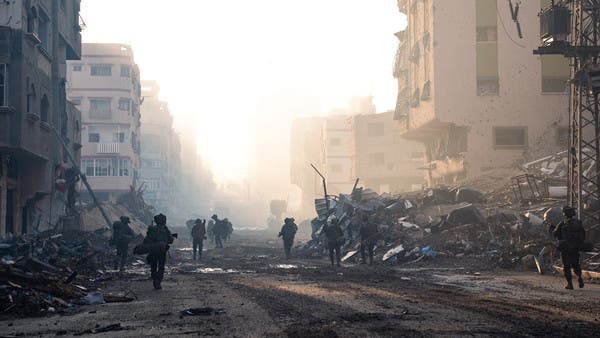Israeli forces in the Gaza Strip – AFP
With Friday’s announcement of the entry into force of the Gaza truce between Israel and Hamas, a recent history of agreements and truces between the two sides comes to mind.
Will the new truce that the world has been waiting for 47 days last… or will it collapse like the previous ones?
Throughout the history of the conflict between Israel and Hamas, the wars have not seen a truce or ceasefire until the fighting has intensified.
In 2008, after the Israeli attack on the Gaza Strip, a truce led to a 6-month ceasefire, brokered by Egypt, which came into force on 19 July.
The truce at that time included a mutual ceasefire and an easing of the military and economic siege on Gaza, including the opening of all border crossings.
However, this truce quickly collapsed the following month, after Israel launched a major ground attack on the coastal strip.
Your browser does not support HTML5 videos
In 2012, after 8 days of intense Israeli bombing of Gaza, mediators such as America and Egypt entered the negotiating line and reached a truce that ended the violence for a long period, as well as prevented weapons smuggling in the Gaza Strip. It was also agreed to bring humanitarian aid and to open the crossings.
But this truce also collapsed after Tel Aviv accused Egypt, which was acting as a mediator, of siding with Hamas.
In 2014, after a 50-day war that killed more than 2,000 people in Gaza, a truce called for a ceasefire and the opening of crossings to transport humanitarian aid and reconstruction supplies, but it also failed because fighting has continued in the Gaza Strip, and Israel and Hamas have exchanged blame for it.
14 thousand dead… and without electricity or water
Despite the results of these truces, they have always proved to be only a temporary bandage.
Today, things appear to be no different, especially since Tel Aviv confirmed, after the October 7 operation, that it is continuing to achieve its goal of ending Hamas militarily and politically.
Since Hamas’ attack on Israel on October 7, which killed 1,200 people and arrested 240 prisoners, Israel has responded by relentlessly shelling the Gaza Strip, killing more than 14,000 Palestinians, most of them civilians, according to the Health Ministry of the Strip. who administers agitation.
The ministry also said that until November 11 it no longer had the ability to count deaths due to the collapse of large sectors of the health system, but the number has since increased significantly. Meanwhile, thousands are still missing and believed to be buried under the rubble.
Your browser does not support HTML5 videos
Three-quarters of Gaza’s population of 2.3 million people have been displaced by the war. Many, if not most, will not be able to return to their homes due to severe damage and the presence of Israeli forces in the north.
Israel has also barred imports into Gaza since the war began and has tightened its siege, cutting off electricity and running out of fuel, water and food, except for a little aid entering through Egypt’s Rafah crossing.
Until a humanitarian truce came into force on Friday morning, followed by an exchange of prisoners between the two sides and the introduction of aid, it also entered that date as the first truce agreed after more than 47 days of violent fighting and thousands of victims, in the international hope that the ceasefire will bear fruit and turn into a ceasefire that will definitively put an end to the suffering of civilians in the besieged sector.

